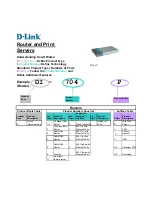
Procedure
Step 1
Configure a VLAN.
Configure S-VLAN 50 with the stacking attribute. The user packet goes upstream carrying two
VLAN tags. The outer VLAN tag identifies the service and the inner VLAN tag identifies the
user. The service of each user is identified by unique S-VLAN+C-VLAN, and the VLAN
forwarding mode is the S-VLAN+C-VLAN mode.
huawei(config)#
vlan 50 smart
huawei(config)#
vlan attrib 50 stacking
huawei(config)#
vlan service-profile profile-id 1
huawei(config-vlan-srvprof-1)#
forwarding vlan-connect
huawei(config-vlan-srvprof-1)#
commit
huawei(config-vlan-srvprof-1)#
quit
huawei(config)#
vlan bind service-profile 50 profile-id 1
Step 2
Configure upstream ports.
Add upstream ports 0/0/1 and 0/0/0 to VLAN 50. Two ports are added for the purpose of port
aggregation.
huawei(config)#
port vlan 50 0/0 0
huawei(config)#
port vlan 50 0/0 1
To aggregate the two upstream ports as one aggregation group, set the packet forwarding mode
of the aggregation group to egress-ingress, and set the aggregation group to work in the LACP
static mode, do as follows:
huawei(config)#
link-aggregation 0/0 0 0/0 1 egress-ingress workmode lacp-static
NOTE
The aggregated ports must meet the following requirements: The ports must work in the full-duplex mode; the
port rates must be the same and the rate of an electrical port must not be of the auto-negotiation type; the attributes
of the ports, such as the default VLAN ID (PVID) and VLAN, must be the same; one port can belong to only
one aggregation group; the port must not be a mirroring destination port; the port must not be in the auto-
negotiation mode; the start port ID must be smaller than the end port ID.
Step 3
In the ADSL access mode, follow this procedure.
1.
Configure an ADSL2+ profile. For details, see
3.7.1 Configuring the ADSL2+ Profile
.
Here, the default ADSL2+ line template (line template 1) and the default ADSL2+ alarm
template (alarm template 1) are used as an example.
2.
Activate the ADSL port, and bind the ADSL2+ templates.
NOTE
By default, an ADSL port is in the activated state. Before binding a template to the port, you must deactivate
the port.
In the ADSL access mode, bind the default ADSL2+ line template 1 and ADSL2+ alarm
template 1 to ADSL port 0/2/0.
huawei(config)#
interface adsl 0/2
huawei(config-if-adsl-0/2)#
deactivate 0
huawei(config-if-adsl-0/2)#
activate 0 template-index 1
huawei(config-if-adsl-0/2)#
alarm-config 0 1
huawei(config-if-adsl-0/2)#
quit
3.
Run the
display traffic table
command to query the existing traffic profiles in the system.
huawei(config)#
display traffic table ip from-index
0
{ <cr>|to-
index<K> }:
Command:
SmartAX MA5616 Multi-service Access Module
Configuration Guide
9 Configuration Example of Services on the MA5616
Through GE Upstream Transmission
Issue 04 (2011-10-30)
Huawei Proprietary and Confidential
Copyright © Huawei Technologies Co., Ltd.
406
















































